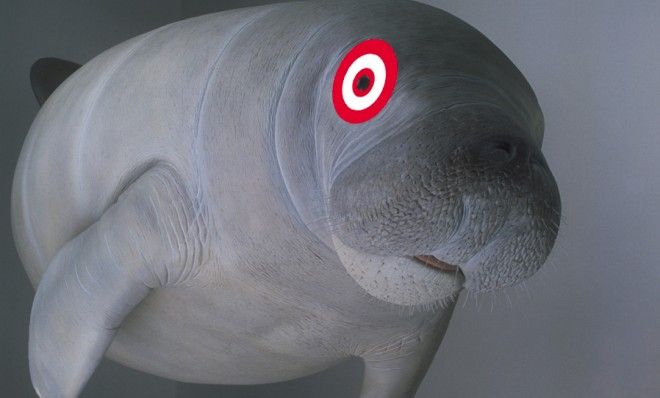How Target fixed its 'manatee gray' plus-size debacle
There's a lesson for retailers in how Target defused what could have been a boycott-sparking flub


"In the Twitter era, marketers have to be extra careful that what they put on their websites isn’t offensive, even intentionally," says Jeff Bercovici at Forbes. "Extra, extra careful." Target failed that test this week. The mistake was so glaringly bad that all it took to start a PR headache was one tweet, from eagle-eyed "Digital Maven" Susan Clemens:
Manatees are endearingly cute, but as their nickname — sea cows — implies, far from svelte. At this point, Target could have taken a page from Urban Outfitters, which has alternated between offering weak, belated apologies and bear-hugging controversy. Or Target could have simply ignored Clemens, and hoped that her 600+ followers (and any other Target.com shoppers) wouldn't notice the faux pas. "Seriously — I never would’ve spotted something like that, particularly if I were online shopping, which I tend to do in a bit of a daze late at night while eating popcorn and drinking lazy cocktails," says Samantha Escobar at The Gloss.
Instead, the company jumped on it immediately. A Target social media guy named Bryan tweeted back right away:
Subscribe to The Week
Escape your echo chamber. Get the facts behind the news, plus analysis from multiple perspectives.

Sign up for The Week's Free Newsletters
From our morning news briefing to a weekly Good News Newsletter, get the best of The Week delivered directly to your inbox.
From our morning news briefing to a weekly Good News Newsletter, get the best of The Week delivered directly to your inbox.
Then Target followed up:
Then the company dropped "manatee gray" from the plus-sizes and issued an apology — and explanation — via Forbes' Bercovici, and then other media outlets. "We apologize for any discomfort this might have caused and are working to update the name of the dress to reflect Dark Heather Gray," Target spokesman Joshua Thomas told Forbes.
"We never want to offend any of our guests. We apologize for any discomfort that we may have caused," spokeswoman Jessica Deede told NBC's Today. "We'll use this instance as a learning experience so we can do better moving forward."
So what was Target thinking? First, Target uses "manatee gray" on lots of items, including petite clothing, towels, and rain boots. In this case, as Bercovici explains, there were apparently "two different teams of buyers responsible for the 'missy' and plus-size product lines, and the teams didn't coordinate when they inputted the product information for the site."
Sign up for Today's Best Articles in your inbox
A free daily email with the biggest news stories of the day – and the best features from TheWeek.com
The bottom line, says Bercovici: "Lesson learned, boycott averted."
"Although I may not always agree with Target's business practices, it is good to see a major organization pay attention to a customer's (very rational) complaints and bring about change as a result," says The Gloss' Escobar.
Target had a "totally understandable explanation" for the flub, says Jessica Rawden at Pop Blend. But the company should "rethink the name of that color," Rawden adds, since the shade "manatee gray" is "unflattering to think about for women wearing any size, no offense to the manatees of the world."
The biggest endorsement of Target's handling of the near-crisis, though, probably came from the woman who got the ball rolling, Susan Clemens:
In case you didn't get the point:
Peter has worked as a news and culture writer and editor at The Week since the site's launch in 2008. He covers politics, world affairs, religion and cultural currents. His journalism career began as a copy editor at a financial newswire and has included editorial positions at The New York Times Magazine, Facts on File, and Oregon State University.
-
 Scientists want to fight malaria by poisoning mosquitoes with human blood
Scientists want to fight malaria by poisoning mosquitoes with human bloodUnder the radar Drugging the bugs
By Devika Rao, The Week US Published
-
 Crossword: March 31, 2025
Crossword: March 31, 2025The Week's daily crossword
By The Week Staff Published
-
 Sudoku medium: March 31, 2025
Sudoku medium: March 31, 2025The Week's daily medium sudoku puzzle
By The Week Staff Published
